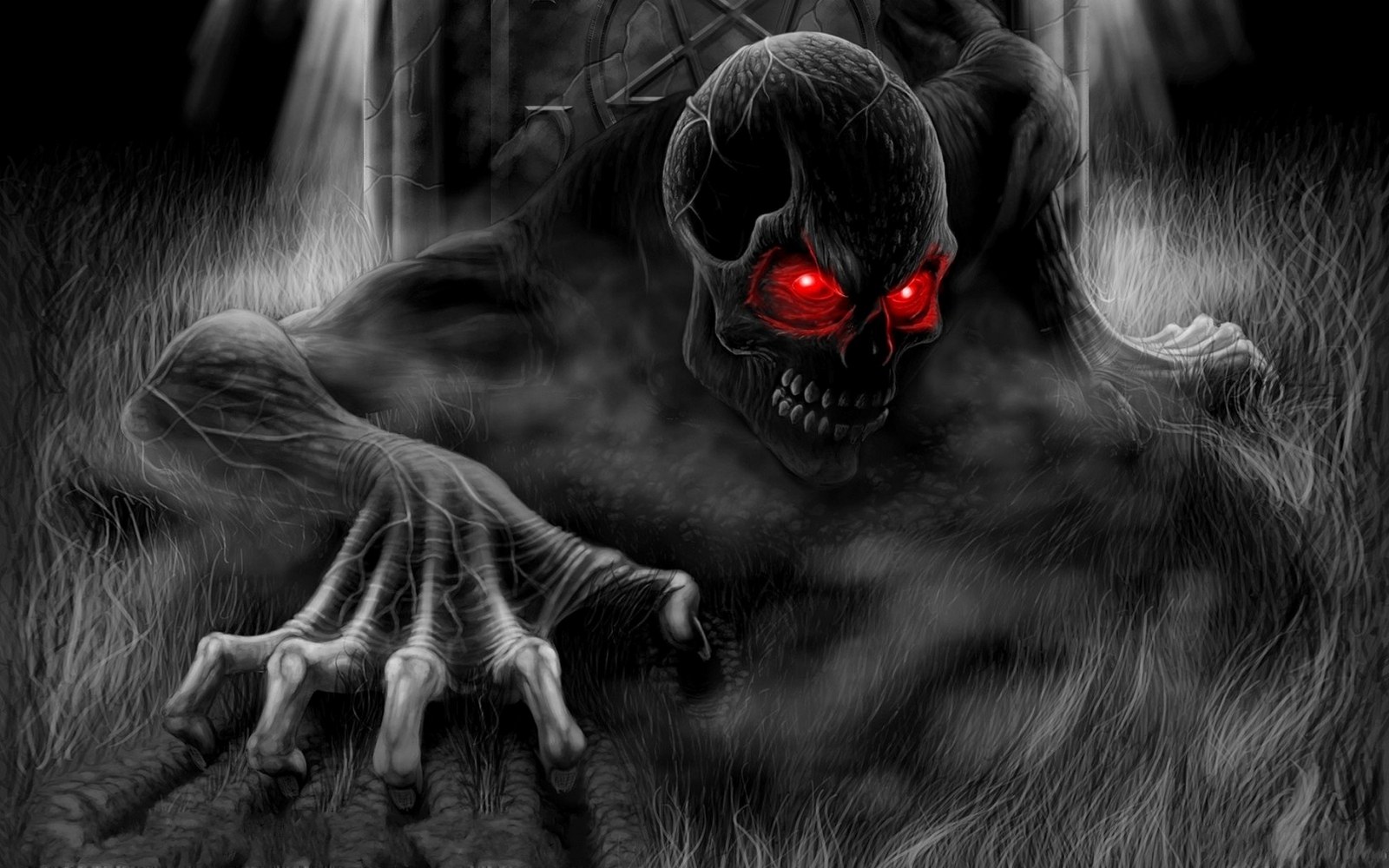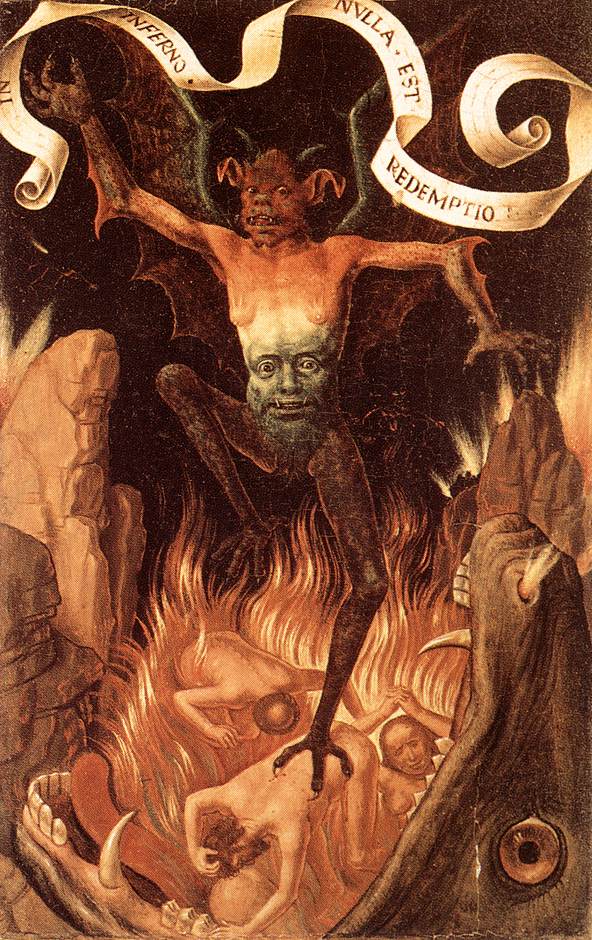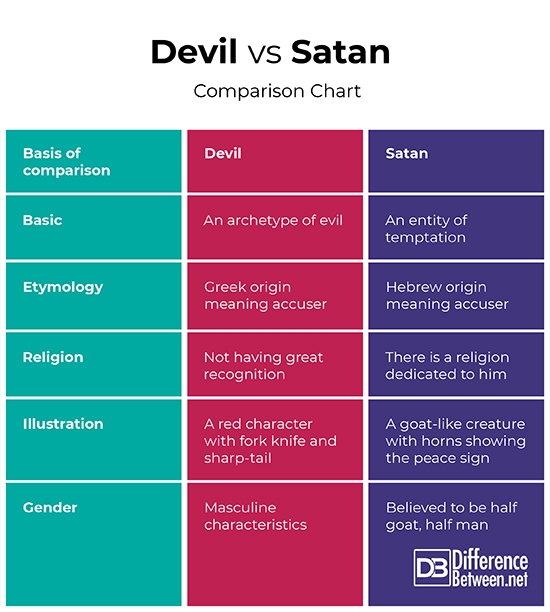Difference Between Devil and Satan
There is a thin line that distinguishes the devil from Satan as many instances seem to quantify them as the same thing. They both stand to be the nemesis of God. They both represent some form of darkness or rebellion. The two terms are also associated with demonic nature and evil.
From a logical perspective, they may both sound similar, but religion and society have found means of distinguishing the two according to the role each takes. For example, in Christianity, Satan is mentioned as a tempter who appeared to Jesus during his time in the wilderness.
In the Islamic religion, Satan can sometimes be referred to as a jinni who was once an angel cast out of heaven. Devil and Satan in several contexts take a male form and are termed as ‘he’ although religion makes it clear that spiritual characters are neither male nor female.

Who is the Devil?
According to Greek mythology, a devil is not a single person but a term used for the personification and archetype of anything evil. The perception includes traditional beliefs and beliefs within a society that may term something or someone as evil.
The devil has various descriptions when it comes to religion. Christianity believes that the devil was a creation of God whereas cosmologies perceive the devil as an independent principle. The devil has many names assigned such as Lucifer, prince of darkness, Moloch, antichrist, Mephistopheles, Beelzebub among others. An evil force surrounds the character of all these terms.
The modern Christians believe the devil is the official ruler of hell which may also not be the case as the scriptures are not clear of the role played by the devil in matters of hell. The word devil is also paired with other prefixes such as dare to form ‘Daredevil’. A ‘daredevil’ refers to someone who takes risks that are life-threatening and makes choices that defy the forces of good.
Who is Satan?
Satan, on the other hand, is considered to be the prince of evil spirits among certain religions; especially Christians who perceive him as a tempter who appeared to Jesus when he was in the wilderness. Also, it is also believed that he made his first appearance in the Bible when he manifested to Eve as a snake tempting her to eat from the forbidden tree.
In most traditions, Satan is an angel who went against God and was cast out as a rebel. Satan can also be an entity who led to the destruction of humanity. Satan is generally a spirit that can manifest man into doing evil things that are against the holy books.

Many scholars have argued the fact that Satan was indeed a fallen angel as he was a creation of God. The theory suggests that if indeed the principles of God were all good, then Satan must have been a rogue product that turned from good to evil. Most religions also believe that Satan has no influence over the righteous and can only manipulate those blinded by his power. The same way it is thought that God rules over good, Satan is the opposite of everything good.
Differences Devil and Satan
-
-
Basis of Distinction
-
The devil is an archetype of evil, also known as a personification of anything society considers as evil or immoral. Satan, however, is used mostly in religion as a spirit used to tempt man into sin and everything that defies the law of good.
-
-
Etymology
-
The origin of the word ‘devil’ is derived from a Greek word meaning slanderer or accuser. Satan is derived from Hebrew meaning accuser with the emphasis of the origin of Satan being a cave fish relating a hell to the underground.
-
-
Religion
-
The devil does not get as much recognition in the , but there is a whole religion set for the worship of Satan as a deity of pride and liberation. This does not, however, mean satanist consider him as a creator but believe in the virtues he possessed and his role to humanity.
-
-
Illustration
-
The devil is usually perceived as a red man-like character with horns, a sharp arrow tail together with a fork knife. Often the devil is given a male character as most portray the devil as ‘he’. Satan is usually a goat-like creature with sharp horns and two fingers symbolizing the peace sign. Despite not being gender specific, the exterior features of half goat and half man suggest that he is male due to the lack of feminine traits and presence of a flat chest.
-
-
Gender
-
No gender is apparent for both, but humans refer to them as ‘he’. The devil has a masculine character with structured face while satan also has some male characteristics such as a flat chest associated with male species.
Devil vs. Satan : Comparison Table

Summary of Devil vs. Satan
- Devil is anything society personifies as evil.
- Christianity considers the manifestation of the devil as Satan.
- The word Satan is Hebrew for an adversary.
- Satan is depicted in many different ways depending on context.
- There is a religion glorifying Satan as a ‘god’.
- Satan can manifest a human body.
- Devil is representation of destructive spirit.
- Different religions have some form of a devil and Satan representation.
- Devil is considered in Christianity as the primary opponent of God.
- The devil is illustrated as a red human-like character.
- Satan is illustrated as a goat-like creature with horns that is half man and half goat.
- Both the devil and Satan have masculine characteristics.
- Difference Between S Corp and C Corp - September 9, 2018
- Difference Between Terrace and Balcony - September 9, 2018
- Difference Between Anabaptists and Evangelicals - August 31, 2018
Search DifferenceBetween.net :
 Email This Post
: If you like this article or our site. Please spread the word. Share it with your friends/family.
Email This Post
: If you like this article or our site. Please spread the word. Share it with your friends/family.
1 Comment
Leave a Response
References :
[0]Brock, M. D. (2016). Satan and the Scots: The Devil in Post-Reformation Scotland, c.1560-1700. Taylor & Francis.
[1]Graves, K. (2007). Biography of Satan: A Historical Exposition of the Devil and His Fiery Dominions. Cosimo, Inc.
[2]Carus, P. (2008). The History of the Devil: With 350 Illustrations. Courier Corporation.
[3]Image credit: https://en.wikipedia.org/wiki/Satan#/media/File:Hans_Memling_-_Hell_-_WGA14941.jpg
[4]Image credit: https://upload.wikimedia.org/wikipedia/commons/thumb/a/a5/Horror-Devil-Pictures-Wallpaper.jpg/640px-Horror-Devil-Pictures-Wallpaper.jpg


wrong information about islam :
satan is not an angel who fell from the heaven ,satan is a jinn that was cast out of heaven , he was never an angel